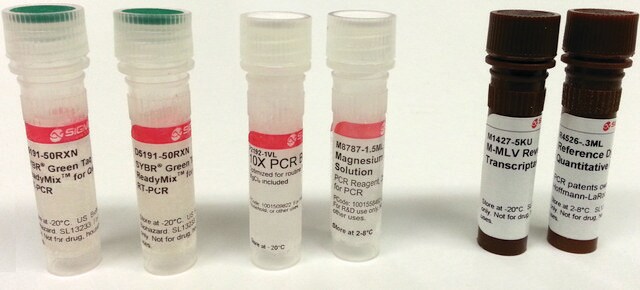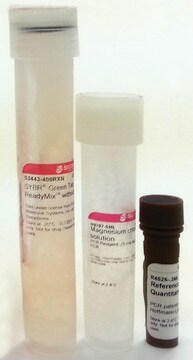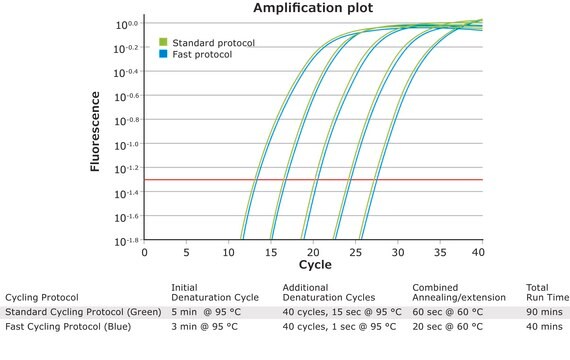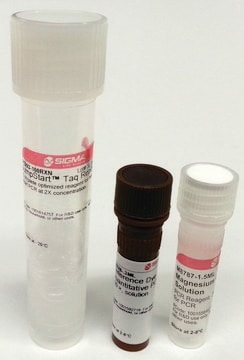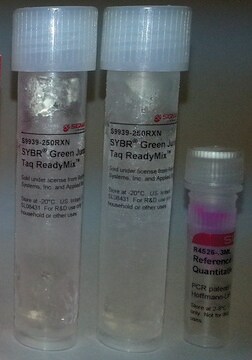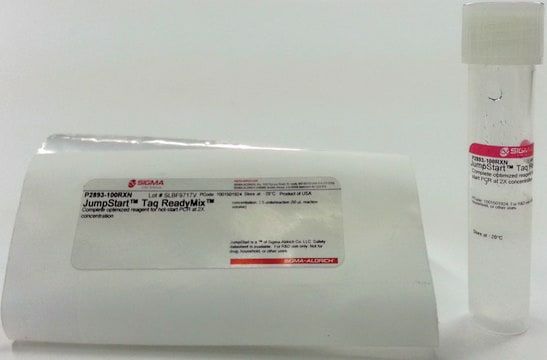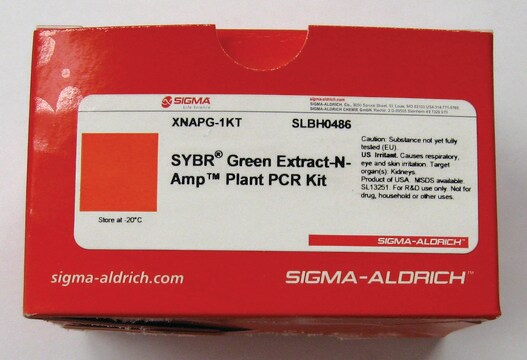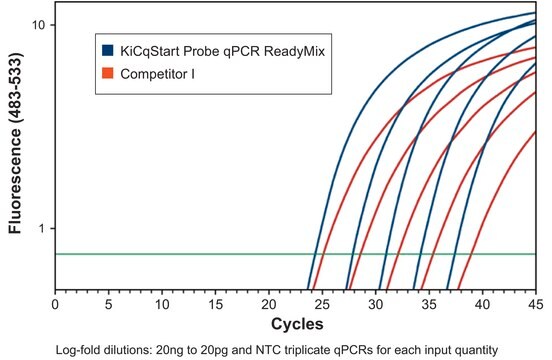R4526
Reference Dye for Quantitative PCR
100 ×, solution
Sinonimo/i:
Reference dye for qPCR, ROX
About This Item
Prodotti consigliati
Stato
solution
impiego
sufficient for ≥600 reactions
Concentrazione
100 ×
tecniche
PCR: suitable
Colore
red
Solubilità
water: soluble
Temperatura di conservazione
2-8°C
Categorie correlate
Descrizione generale
Applicazioni
- in the preparation of mastermix for real time-quantitative polymerase chain reaction (RT-qPCR)
- as a component of the reaction mixture for detection of Clostridium difficile by quantitative polymerase chain reaction (qPCR)
- for analyzing the degree of cellular DNA contamination by qPCR
Altre note
Prodotti correlati
Avvertenze
Warning
Indicazioni di pericolo
Consigli di prudenza
Classi di pericolo
Aquatic Acute 1 - Aquatic Chronic 1 - Eye Irrit. 2 - Skin Irrit. 2 - Skin Sens. 1
Codice della classe di stoccaggio
12 - Non Combustible Liquids
Classe di pericolosità dell'acqua (WGK)
WGK 3
Punto d’infiammabilità (°F)
Not applicable
Punto d’infiammabilità (°C)
Not applicable
Dispositivi di protezione individuale
Eyeshields, Gloves
Scegli una delle versioni più recenti:
Possiedi già questo prodotto?
I documenti relativi ai prodotti acquistati recentemente sono disponibili nell’Archivio dei documenti.
I clienti hanno visto anche
Protocolli
Protocol describes amplification of DNA through quantitative PCR with SYBR Green. Consistent batch-to-batch performance can be achieved with large numbers of PCR reactions.
Our SYBR Green qPCR Protocol is a method designed to detect accurate quantification of gene expression and RT-PCR reactions
Il team dei nostri ricercatori vanta grande esperienza in tutte le aree della ricerca quali Life Science, scienza dei materiali, sintesi chimica, cromatografia, discipline analitiche, ecc..
Contatta l'Assistenza Tecnica.